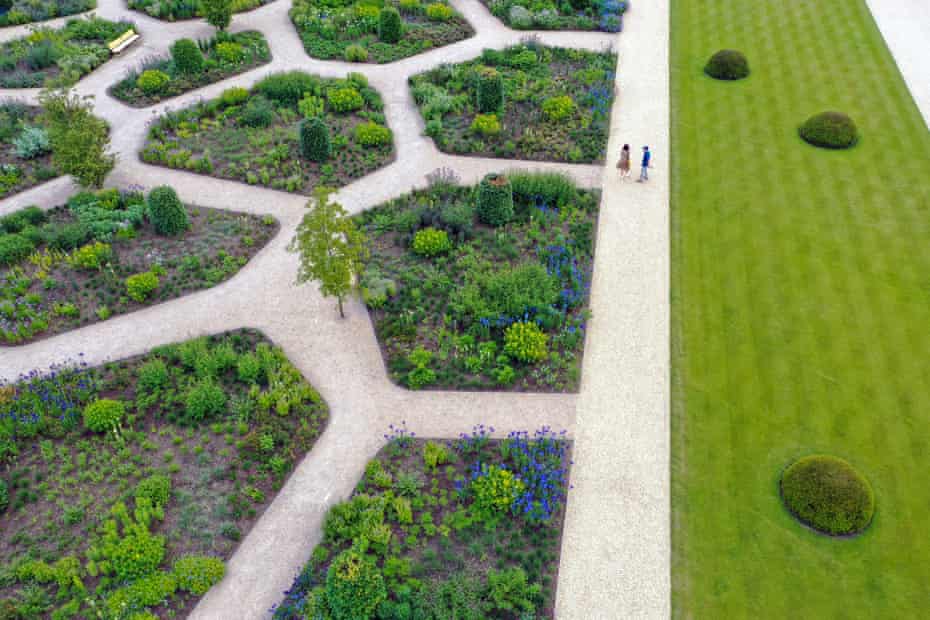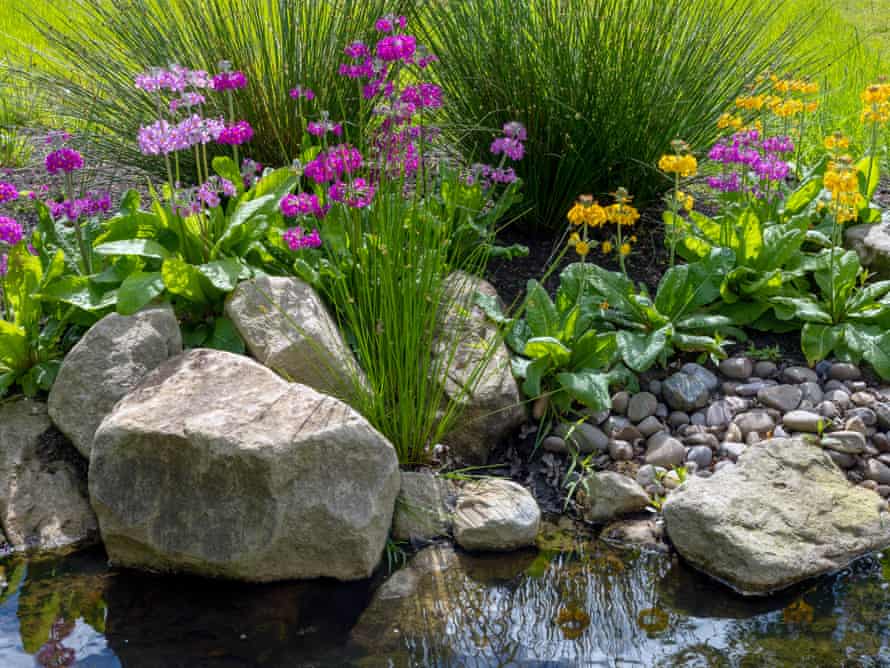Weeds, wellbeing and pizza ovens: Bridgewater, a new kind of RHS garden

By allowing designers to playfully rewrite the rules, the Royal Horticultural Society has created a radical, sustainable garden that is almost guaranteed success
“We haven’t set out to make a Chelsea garden, we’ve set out to make a real one,” says Sylvia Travers, a team leader at RHS Bridgewater. Indeed, the much-heralded 154-acre garden in Salford, Greater Manchester, which opened in May, nearly a year later than planned due to Covid, does feel particularly authentic. There are weeds – some intentional, such as nettles growing in the forest garden, and some still to be pulled out. There are irregular beds; wild edibles; a no-dig kitchen garden; wildlife habitats; communal beds; a wellbeing garden; and even pizza ovens. It is also embedded within its community.
But, this being the Royal Horticultural Society, one of the oldest horticultural societies in the world, you’d expect glamour and scale, too. Masterplanned by landscape designer Tom Stuart-Smith, it features the largest working, walled garden in Europe, the Weston walled garden – the only remaining part of Worsley New Hall.
It is divided into two parts: the paradise garden is designed by Stuart-Smith, and has his trademark clean modernist lines and naturalistic plantings. There’s a central square of pleached Persian ironwoods, Parrotia persica, from which a rill runs to fill a lily pool. The western side is filled with Asiatic species, from the strong architectural foliage of Schefflera macrophylla to the delicate otherworldliness of the hyacinth orchid, Bletilla striata. The far east corner relaxes into looser mosaic beds filled with Mediterranean treasures, such as the coral plant, Berberidopsis corallina, tall, bearded irises, and pops of purple from various alliums. There are two Victorian-style lean-to hothouses for tender things that might sulk under a damp Mancunian summer: figs, apricots and peaches in one, and bulbs and succulents from the various Mediterranean-type ecosystems from around the world, including plumbagos, clivias and aeoniums, in the other.

The kitchen garden, designed by Harris Bugg Studio, has a network of pathways that reference the Bridgewater canal and old Ordnance Survey maps in their wayfinding. This means many of the beds are rather nonconformist, mostly triangular in shape, giving this working garden a modern feel. There’s all the usual fare you’d expect in a vegetable garden (everything from lettuce to leeks) and plenty of things you might not, such as salad burnet and hostas. One side of the plot has been given over to a forest garden where the majority of the edibles are perennial – including hops and sea buckthorn – and are grown under permaculture principles (a design approach that uses the natural ecosystem as its main influence). All the organic produce goes to the cafe in an elegant new visitor centre.
The kitchen garden practises no-dig methods – quite a departure for the RHS. Travers, who trained in permaculture, is introducing the concept of regenerative horticulture – where the conservation and rehabilitation of the soil is key – into the RHS mantra. She is creating habitats for wildlife, such as mushroom logs and bundles of spent seed heads for overwintering insects.
There’s also a section dedicated to herbs, filled with things like hyssop, Agastache foeniculum, for teas and tisanes, as well as beds that will be dedicated to cut flowers. The walls are clothed with an impressive array of trained fruit trees in fans, espaliers, and U-shaped cordons, including heritage pears, apples and, on the south-facing, warmer sides, apricots. It has the formal straight lines of vegetables in a Victorian kitchen garden, with the looser feel of more regenerative horticulture. There are steel towers that reference industrial chimney stacks, for growing climbers, such as the hops.

In the Worsley welcome garden, also designed by Stuart-Smith, the days of poker-straight formal borders are long gone: instead, irregular-shaped beds create meandering pathways. Nearby is the Moon Bridge Water, a large lake created for the site; you’d never guess the M60 was just beyond.
“It’s been interesting trying to pull all the disparate elements of the garden together,” says curator Marcus Chilton-Jones. His solution has been to lift key elements from one garden and allow them to bleed into another. For example, in the Middle Wood, pin oaks, Quercus palustris, and the katsura tree, Cercidiphyllum japonicum, are planted into the existing woodland to echo their clipped counterparts in the Paradise garden. A Chinese stream garden in the far corner could jar, but Chilton-Jones has created an English meadow that meanders its ways into a Chinese wildflower meadow, ending in a streamside of Primula beesiana and P. bulleyana. These gardens call out to one another – it’s an intriguing idea.

It echoes something else that is central to Bridgewater, which is the way we communicate: with each other, with our inner selves, with the wildlife around us. Outside the fancy walled gardens sits a community area. In the past, these might have been situated at the back, but here they are, up front and proud: communal beds for use by everyone, from schoolchildren to refugee and toddler groups, to learn to how to grow. There are also places to learn how to coppice, or grow cut flowers; a wellbeing garden; and plans for pizza ovens.
Like the rest of us, Bridgewater spent a year in lockdown. Chilton-Jones says it was a blessing because it allowed the garden to come together. It’s clear that the team used this quiet time to do the same. The garden is a departure from many of the old ways of the RHS; a large part of its almost guaranteed success is that the gardeners are playfully rewriting the rules
Grow yourself healthy: why patients are getting Bridgewater on ‘prescription’
One of the most progressive aspects of Bridgewater is its wellbeing garden. The physical and mental benefits of gardening are well documented, and a survey published last year by the RHS found that nearly three-quarters of people with a garden, courtyard or balcony said it helped their mental health during lockdown.
Social prescribing will give patients the chance to access this healing power. NHS services in Salford will be able to refer patients for gardening at Bridgewater as part of a drive for clinicians to issue “prescriptions” for sports, nature and social activities, instead of drugs.
Bridgewater has already run a pilot scheme. Doctors in Swinton, Salford, prescribed gardening for 47 patients with a range of conditions; they then attended weekly sessions at Bridgewater. Independent analysis of the pilot by Salford University found that participants reported greater emotional wellbeing and lower stress.

Bridgewater plans to restart social prescribing as soon as Covid restrictions allow. “We will be supporting people with stress, depression, and social isolation,” says RHS therapeutic gardener Ozichi Brewster, who runs the garden. “Our aim is to inspire people through plants and nature, and bring people together,” Brewster says. “You can’t overestimate the health benefits of nature.”
Anna Bawden
